
The Lok Sabha elections of 2004 witnessed a big technological leap. The traditional ballot box was completely replaced by the sleek Electronic Voting Machine (EVM). Polling stations across all 543 constituencies resounded with the loud beeping sound made by the EVM every time a voter cast his or her vote. In a first, the counting of the votes was completed in less than a day, which inspired a sense of amazement because the counting of ballot papers would take two to three days.
This important milestone in the country’s electoral history was recorded 20 years ago. Since then, three more Lok Sabha elections and 132 state assembly polls have been held using the EVM. The coming parliamentary elections will be the fifth since 2004 to have universal use of the EVM. It has been an eventful journey for the voting machine, hailed as a uniquely Indian innovation that has transformed the way elections are conducted in the country, even as political parties and other stakeholders have questioned its reliability at regular intervals.
The journey of the voting machine had begun much before 2004 though. In 1977, Chief Election Commissioner S.L. Shakdhar had proposed the idea of developing a voting machine. The Electronics Corporation of India Ltd, Hyderabad, and the Bharat Electronics Limited, Bengaluru, developed prototypes for the EVM.
The voting machine made its debut in some polling stations in Kerala’s Paravur assembly constituency during the byelection in 1982. It was not a dream debut though— the use of EVM was challenged legally, and the Supreme Court ruled that it could not be used in elections since an enabling provision was not present in the law. The Rajiv Gandhi government amended the Representation of People Act in March 1989 to provide for a legal backing to the EVM. And, Section 61A was inserted into the law.
This story is from the April 07, 2024 edition of THE WEEK India.
Start your 7-day Magzter GOLD free trial to access thousands of curated premium stories, and 9,000+ magazines and newspapers.
Already a subscriber ? Sign In
This story is from the April 07, 2024 edition of THE WEEK India.
Start your 7-day Magzter GOLD free trial to access thousands of curated premium stories, and 9,000+ magazines and newspapers.
Already a subscriber? Sign In

Doctor's doctors
Internists deal with prevention, diagnosis and treatment of all kinds of diseases, while also coordinating with doctors across specialties

WORK THIS OUT!
What is the true cost of a 90-hour workweek? Reduced productivity, mental health issues and severe health risks, say doctors
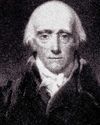
The experience of oppression
The British enacted several laws that might appear liberal, only to then veto the invocation of progressive measures. Nevertheless, these milestones guided the founding fathers in conceiving and creating the Constitution of India
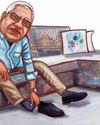
One, two, buckle my shoe!
“Darling,” I said to my life companion of more years than I care to remember, “Do you think there is any correlation between pain in the feet and attending prayer meetings?”“You really are a stupid old man!” said the light of my life. “Can’t you think of anything more bizarre so late at night?”

A helping hand
Over the past year, Imaginarium has placed 3D-printed parts in space, in human bodies, in oil fields in the Middle East, and as drones on the Indian border
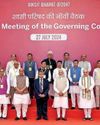
Fading federalism
One of the most visible indicators of the erosion of state autonomy is the diminishing financial independence of states
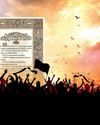
FOUNDING MOTHERS OF THE CONSTITUTION
THEIR CONTRIBUTION IN THE MAKING OF THE REPUBLIC REMAINS EXEMPLARY AND INSPIRING

Value every breath
VO2 max is the best way to measure fitness and predict life expectancy

Statutes of unity
The Constitution reminds us that national oneness comes through addressing inequalities, not enforcing uniformity
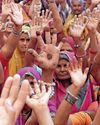
Incomplete equality
Equal marriage rights is one of the last bastions of patriarchy and to dismantle it, the recognition of marital rape as an offence is non-negotiable